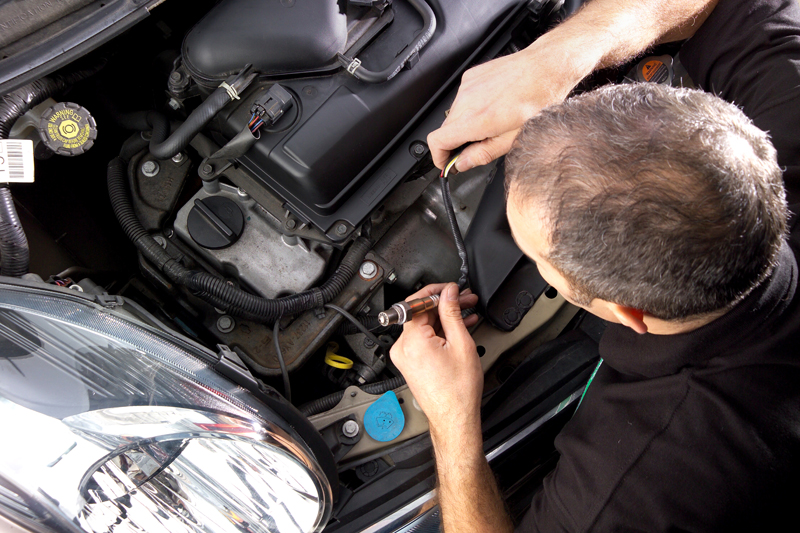
Vehicle electronics supplier, Elta Automotive, is now supplying the VOLT brand product range. The brand brings more to the table than just components, as it shows here with in-depth, technical advice on lambda sensors.
Lambda sensors were first fitted to cars in 1977 to improve the efficiency of combustion engines and help to reduce harmful exhaust emissions such as carbon monoxide. The sensors operate by measuring the amount of oxygen in the exhaust, with an efficient engine requiring a specific amount of air and fuel in its cylinders at combustion – the perfect ratio being 14.7:1 (14.7 parts air to one part fuel). This perfect mixture is called ‘lambda’ and this is where the unusual name originates.
The levels calculated by the lambda are sent as data to the ECU, which then calculates and determines how best to achieve the ideal mixture of air and fuel at combustion.
An incorrect air/fuel mixture will be either rich or lean:
- In a rich mixture the air is high in unburned fuel, though low in oxygen
- A lean mixture has the opposite balance and is high in oxygen due to a lack of fuel being injected
Many vehicles now feature a pre-cat lambda sensor and a post-cat lambda sensor. Whilst the pre-cat lambda sensor communicates to the ECU regulating the air/fuel ratio, the post-cat lambda sensor performs a diagnostic role, monitoring the catalytic converter.
Symptoms of lambda failure
Before a vehicle fails an emission test or the engine check light appears, drivers may notice increased fuel consumption and/or a rough idle – both are signs of a failing sensor. Once the sensor fails, the OBD may display either code P0131 or P0134.
Causes of failure
Many will simply fail due to age. The lifespan tends to be 45,000 miles for an unheated sensor; a heated sensor can typically last closer to 100,000 miles. Damage to the heater element, vibration or damage to the connectors and/or wires should also be considered.
Other less obvious causes can be identified by examining the visual appearance of the failed sensor.
Installation advice
The lambda sensor requires careful installation to ensure its longterm reliability. Therefore, plugs and cables should be kept clear of heat sources and care should be taken so as not to cross-thread or over-torque it.
VOLT recommends the following fitting procedure:
1. When replacing the exhaust system or catalytic converter, always take the opportunity to install new sensors, as the existing items are extremely fragile and can be easily damaged
2. Clean the thread in the exhaust pipe with a cleaning tap
3. Apply copper grease on the sensor thread only. Do not grease the sensor nose. Although most lambda sensors are pre-greased, the extra grease will prevent thread galling and reduce friction, which could lead to over-torque (especially with a stainless steel thread)
4. Tighten the sensor to the prescribed torque, using a torque wrench with a suitable lambda sensor socket.
Over-torque is especially dangerous when sensors have a heater element, as it could crack the internal ceramic wall, causing the sensor to fail. For vehicles with two lambda sensors, VOLT always recommends replacing both, as each will have covered the same mileage and been subject to identical driving conditions/standards, and if one has failed, it is likely the other will also do so.
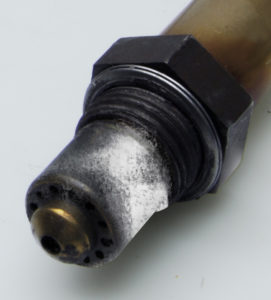
Antifreeze contamination
Visual signs: The sensor nose will have a grainy white/light grey coating.
Cause: Coolant with antifreeze may have entered the combustion process and reached the lambda sensor.
Solution: Check the head gasket for leaks and repair if required.
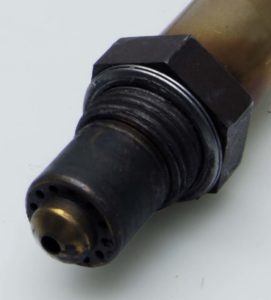
Oil contamination
Visual signs: Look for oily black deposits left on the sensor nose.
Cause: The vehicle may be burning excessive oil.
Solution: Thoroughly check the engine for leaks including the usual seals that are prone to failure. Once repaired, replace the sensor.
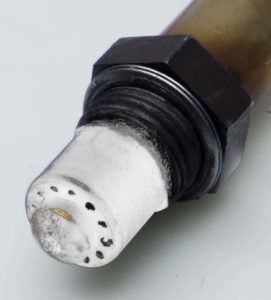
Engine additive contamination
Visual signs: The sensor nose will be contaminated with white or red deposits.
Cause: Excessive use of any engine or fuel additive can contaminate or block the lambda sensor.
Solution: Cleaning the fuel system prior to replacement is required.
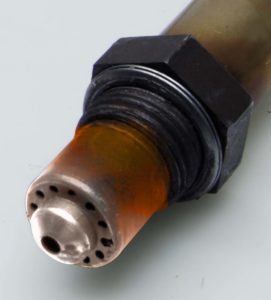
Lead contamination
Visual signs: The sensor nose may be contaminated with shiny grey deposits.
Cause: Not as common now, usually caused by leaded fuel attacking platinum parts or the sensor.
Solution: Replace any leaded fuel in the system with unleaded.
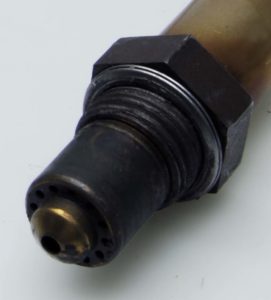
Fuel contamination
Visual signs: If fuel is burning too rich, a black soot may be seen on the sensor nose.
Cause: A damaged sensor or fault in the fuel system can result in a high air-to-fuel ratio, producing black soot.
Solution: Measure exhaust gases to ensure the fuel system is working. Check the sensor heater control and sensor heater.









